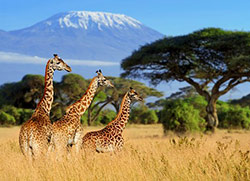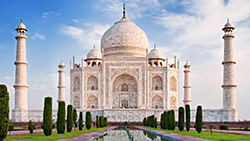- Global citiesAfricaAmericaAsiaEuropeOceania





- News
- Analysis
- Int. Corridors
- Mega Projects
- Global citiesAfricaAmericaAsiaEuropeOceania





- News
- Analysis
- Int. Corridors
- Mega Projects











Yerevan
Armenian Dram
2.8 m
Yerevan, Gyumri , Vanadzor, Vagharshapat
Armenia boasts a rich historical legacy that spans several millennia. It was one of the earliest Christian civilizations with King Tiridates III declaring Christianity as the state religion in 301 AD – making it the first nation to do so officially. Throughout history, Armenia faced invasions from various empires including Roman Empire, Persian Empire, Byzantine Empire among others but managed to maintain its distinct identity despite periods of foreign rule or occupation. The Armenian Genocide during World War I remains a significant event in Armenian history when an estimated 1.5 million Armenians were killed or deported by Ottoman forces.
Situated at the crossroads between Europe and Asia along with being part of both Eastern Europe and Western Asia geographically speaking; Armenia’s diverse geography offers breathtaking landscapes ranging from high mountains to fertile valleys. Mount Ararat – an iconic symbol for Armenians – stands tall at over 5,100 meters above sea level but is currently located within Turkish territory after border changes following World War I. Other notable mountain ranges include Lesser Caucasus Mountains which provide excellent opportunities for hiking enthusiasts.
The country’s economy relies heavily on agriculture, mining, and manufacturing industries. Key agricultural products include grapes, apricots, wheat, and potatoes. The mining sector focuses on metals such as copper and gold. Additionally, Armenia has been investing in high-tech industries such as information technology and software development. The country has also made efforts to attract foreign direct investment through tax incentives and business-friendly policies.
The industrial sector in Armenia plays a crucial role in its economy. Besides mining and high-tech industries mentioned earlier, other sectors include textiles, chemicals, machinery production, food processing, and construction materials. The country has been working towards diversifying its industrial base by encouraging innovation and entrepreneurship.
Armenia’s tourism industry has been growing steadily over recent years due to its rich cultural heritage and natural beauty. The capital city of Yerevan is known for its vibrant nightlife, museums showcasing Armenian history and art, and numerous cultural events throughout the year. Outside of Yerevan lies stunning landscapes including Lake Sevan – one of the largest freshwater lakes in Eurasia – surrounded by mountains offering opportunities for hiking and skiing. Other popular tourist destinations include ancient monasteries like Geghard Monastery and Tatev Monastery which are UNESCO World Heritage Sites.
Armenian culture is deeply rooted in its ancient history dating back over 3,000 years. The country takes pride in its unique language (Armenian), traditional music (duduk being one of the most famous instruments), dance (kochari being a popular folk dance), cuisine (known for dishes like dolma and lavash bread), religious traditions (predominantly Armenian Apostolic Christianity), literature (with notable figures like Sayat-Nova), architecture (including medieval churches), and craftsmanship (such as carpet weaving). Armenians are known for their warm hospitality towards visitors.
